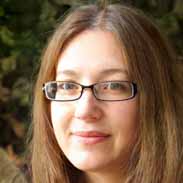Chapter 12; DNA: The Genetic Material – Flashcards
Unlock all answers in this set
Unlock answersquestion
DNA, proteins
answer
chromosomes are made of....
question
Griffith
answer
discovered that the DNA is one organism can transform the DNA in another organism to something else and discovered DNA in 1928; was looking for a pneumonia vaccine, not DNA; was working with harmful and harmless bacteria;
question
Griffith's experiment
answer
1. injected disease-causing harmful bacteria into mice; they died 2. injected harmless bacteria into mice; they lived 3. injected heat-killed harmful bacteria into mice; they lived 4. injected heat-killed harmful bacteria WITH the harmless bacteria into the mice; they died -discovered that something in the heat-killed harmful bacteria transformed the harmless bacteria into harmful, which killed the mice
question
Avery
answer
(1944) proved first that the genetic material was DNA; believed the genetic material is DNA; re-did Griffith's experiment;
question
Avery's experiment
answer
1. instead of heat-killing the harmful bacteria, he killed the bacteria with a DNA-destroying enzyme 2. mixed enzyme-killed harmful bacteria with the live harmless bacteria, gave it to the mice, and didn't cause pneumonia -proved first that the genetic material was DNA
question
Hershey and Chase
answer
(1952) proved that the genetic material was DNA; used bacteriophages (viruses that infect bacteria) in their research
question
Hershey and Chase's experiment
answer
1. exposed bacteriophages to radioactive sulfur, which can only be found in proteins, and radioactive phosphorus, which can only be found in DNA 2. allowed the exposed 'phages to infect the bacteria 3. once the bacteria was infected, they examined the bacteria and found the radioactive phosphorus in the bacteria due to the fact that the 'phages only inject their DNA into the bacteria -proved that the genetic material was DNA
question
nucleotides
answer
sub-units/components of the DNA; make up the DNA
question
deoxyribose (5 carbon sugar), phosphate, and a nitrogen base
answer
a nucleotide is made up of...
question
adenine (A), guanine (G), cytosine (C), and thymine (T)
answer
the four nitrogen bases are....
question
thymine
answer
adenine bonds to...
question
adenine
answer
thymine bonds to...
question
cytosine
answer
guanine bonds to...
question
guanine
answer
cytosine bonds to...
question
sugar (deoxyribose)
answer
the bases are attached to the (phosphate/sugar)
question
rungs
answer
in a DNA molecule, the bases make up the....
question
sides
answer
in a DNA molecule, the sugars (deoxyribose) and phosphates make up the.....
question
twisted, double helix
answer
DNA is _____ into a _____.
question
6 billion
answer
in every cell, the DNA is ______ bases long
question
Chargaff
answer
saw that there was always the same amount of adenine and thymine, and the same amount of guanine and cytosine
question
Chargaff's Rule
answer
adenine only bonds to thymine, and guanine only bonds to cytosine
question
Watson and Crick
answer
(1952) discovered the structure of DNA; used information from Chargaff and Wilkins & Franklin's experiment to build a DNA model
question
three
answer
cytosine and guanine bases pair to each other by _____ hydrogen bonds
question
two
answer
thymine and adenine bases pair to each other by _____ hydrogen bonds
question
alternating
answer
two outside strands of DNA consist of ______ deoxyribose and phosphate
question
histones
answer
a group of beadlike proteins that the DNA tightly coils around/winds up on
question
semiconservative replication
answer
parental strands of DNA separate, serve as templates, and produce DNA molecules that have one strand of parental DNA and one strand of new DNA
question
first, unwinding
answer
in the ____stage of DNA replication, ______,hydrogen bonds between bases are broken down my helicase enzymes
question
second, base pairing
answer
in the ____ stage of DNA replication, ______, DNA polymerase enzymes bond free nucleotides to open base sites
question
DNA polymerase
answer
an enzyme that catalyzes the addition of appropriate nucleotides to the new DNA strand
question
Okazaki fragments
answer
small lagging DNA strand segments that are synthesized discontinuously; are later connected by the enzyme DNA ligase
question
eukaryotes
answer
in _____, DNA unwinds in multiple areas as DNA is replicated; each individual area of chromosomes replicates as a section; as a result, multiple areas of replication are occurring along the large chromosome at the same time; DNA remains packaged in a nucleus; multiplication replication origins look like bubbles in the DNA strand
question
prokaryotes
answer
in ______, the circular DNA strand is opened at one origin of replication; the DNA replication occurs in two directions; the DNA remains in the cytoplasm; typically shorter than the other cell type's DNA
question
nucleosome
answer
forms when the phosphate groups in DNA create a negative charge, which attracts the DNA to the positively charged histone proteins
question
chromatin fibers
answer
grouped-together nucleosomes; supercoil to make up the DNA structure recognized as a chromosome
question
double helix
answer
twisted ladder shape; formed by two strands of nucleotides twisted around each other
question
purine
answer
adenine and guanine are _____ bases.
question
pyrimidine
answer
cytosine and thymine are ______ bases.
question
adenine, guanine
answer
_____ and _____ are purine bases.
question
cytosine, thymine
answer
_____ and _____ are pyrimidine bases.
question
purine bases
answer
double-ringed bases
question
pyrimidine bases
answer
single-ringed bases
question
purine
answer
a _____ base always binds to a pyrimidine base.
question
pyrimidine
answer
a ______ base always binds to a purine base.



